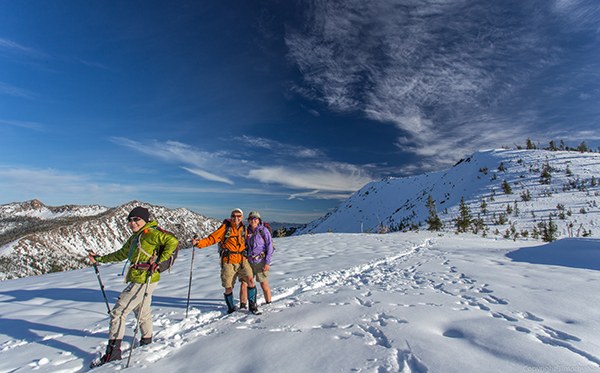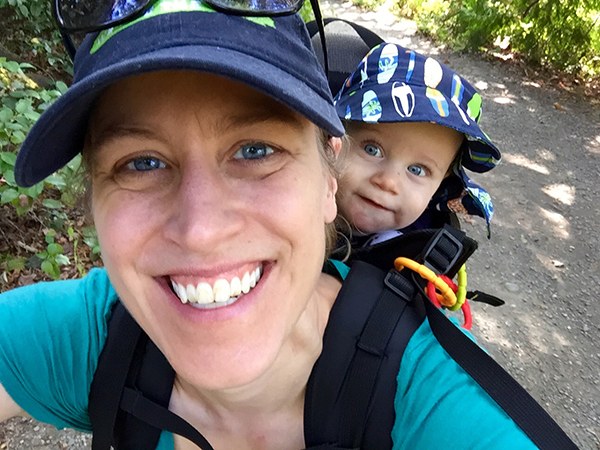
Last April, I took Earth Day off to spend the day outdoors with my family. We huffed it up Mt. Si, my longest hike since the birth of our son three months prior. We started hiking when he was about two weeks old, but it was on this hike that he started to really look around and take things in. Mt. Si is such a resource for so many of us in the greater Seattle area: a resource that I appreciated previously as an escape from city living, and appreciate even more as we raise a kid in the city. Access to nature is so critical to all of us. The Land and Water Conservation Fund protected Mt. Si for our use — setting the area aside for conservation and recreation.
I look at areas that the Fund has protected here in Washington — from places within the Alpine Lakes Wilderness, Mt. Rainier National Park, and the Pacific Crest Trail, to close-to-home recreation areas like the playing fields at Magnuson Park in Seattle — and am struck by this wide-ranging impact.
If you’ve never heard of the Land and Water Conservation Fund (LWCF), you’re not alone. Yet, LWCF is one of the most effective tools we have to conserve land and improve outdoor recreation opportunities. The Land and Water Conservation Fund uses a portion of the royalties from off-shore oil and gas leasing to fund outdoor recreation and conservation priorities.
The LWCF has been providing funding to help protect some of Washington State’s most special outdoor places and ensure recreational access. Washington state has received $637 million in LWCF funding over the past 50 years. Simply put, Washington’s vibrant outdoor recreation scene — the places where we love to play — would not exist today without the Land and Water Conservation Fund. LWCF is vital for our access to outdoor recreation, conserving outdoor spaces that are important to us, and helping insure equal access to park lands for all.
Thomas O’Keefe, of our partner organization American Whitewater, and a Mountaineers Advisory Committee member, shares that the Land and Water Conservation Fund “represents a fair and longstanding commitment by Congress to the American people that resource development will occur in tandem with protection for public lands.”
The Fund also has special ties to the Pacific Northwest, as Washington Senator Henry “Scoop” Jackson introduced the original Land and Water Conservation Fund Act to the Senate. The bill received overwhelming bipartisan support and was signed into law by President Johnson on September 3rd, 1964.
There are LWCF projects in all but two counties in Washington, from city parks to projects that improve some of our most iconic public lands and waters. Here are just a few examples:
- The Alpine Lakes Wilderness, where glacier-carved terrain and forested valleys give way to rocky ridges and rugged peaks, is an amazing resource so close to the Puget Sound. Over 150,000 of us visit each year to hike, camp, climb, fish and horseback ride. Among the many areas within Alpine Lakes protected by LWCF are portions of the Chiwaukum Creek Trail, Ingalls Creek Trail, Eightmile Lake, lands along the Waptus River, Pratt Lake and areas along popular trails on Rampart Ridge.
- The Mountains to Sound Greenway, extending from the Seattle waterfront to Ellensburg, is an outdoor recreation paradise, hosting 1,600 miles of trails, excellent whitewater run, backcountry skiing and snowshoeing terrain, rock climbing routes, mountain bike trails, and views of the stunning Cascade Crest. Some of the most popular places in the Greenway have been protected by the LWCF, including access to Rattlesnake Mountain, Mount Si and recreational access along the Middle Fork Snoqualmie River. On the east side, LWCF funding has protected popular destinations in the Okanogan-Wenatchee National Forest like Lake Cle Elum. Section 6 funding has been essential to the I-90 wildlife bridges program, protecting north-south wildlife migration corridors.
- Mt. Rainier is arguably the iconic peak of the Pacific Northwest, shaping our mountain culture and community. The Carbon River entrance is the closest access point for dense population centers to the north. The Carbon River road and camping facilities had been repeatedly washed out by flooding from the glacier-fed river, resulting in hundreds of thousands of dollars in recurring repairs. LWCF funding allowed for the Ipsut Creek campground to be relocated safely above the floodplain, and the conversion of a historic farm house into a new visitor center.
Despite all this, Congress let the Land and Water Conservation Fund expire this past September. While The Mountaineers had been advocating for the Fund’s reauthorization throughout 2015, I really couldn’t imagine that this successful, bipartisan program wouldn’t be reauthorized. Its expiration is an unfortunate loss for the outdoor recreation and conservation community, but we are encouraged by the tremendous outpouring of support and energy — including 375 Mountaineers members who wrote to their legislators — and the overwhelming majority of Congress.
By the time this goes to print, I hope our champions in Congress have permanently reauthorized the Land and Water Conservation Fund as it currently works — with focus on both federal and state and local projects. I hope we will still be able to protect our natural places for conservation and recreation so my son continues to have opportunities to get dirt under his nails on Earth Day and every day. And if not, we’ll continue to fight for this, as The Mountaineers have fought for our wild places since the beginnings of our organization.
 Enjoying our outdoor spaces with the little one. Photo by Katherine Hollis.
Enjoying our outdoor spaces with the little one. Photo by Katherine Hollis.
We appreciate the leadership Washington Wildlife and Recreation Coalition has provided on this issue here in Washington. Visit WildlifeRecreation.org for more on the hundreds of projects LWCF has made possible.
This article originally appeared in our Winter 2016 issue of Mountaineer Magazine. To view the original article in magazine form and read more stories from our publication, click here.
 Katherine Hollis
Katherine Hollis